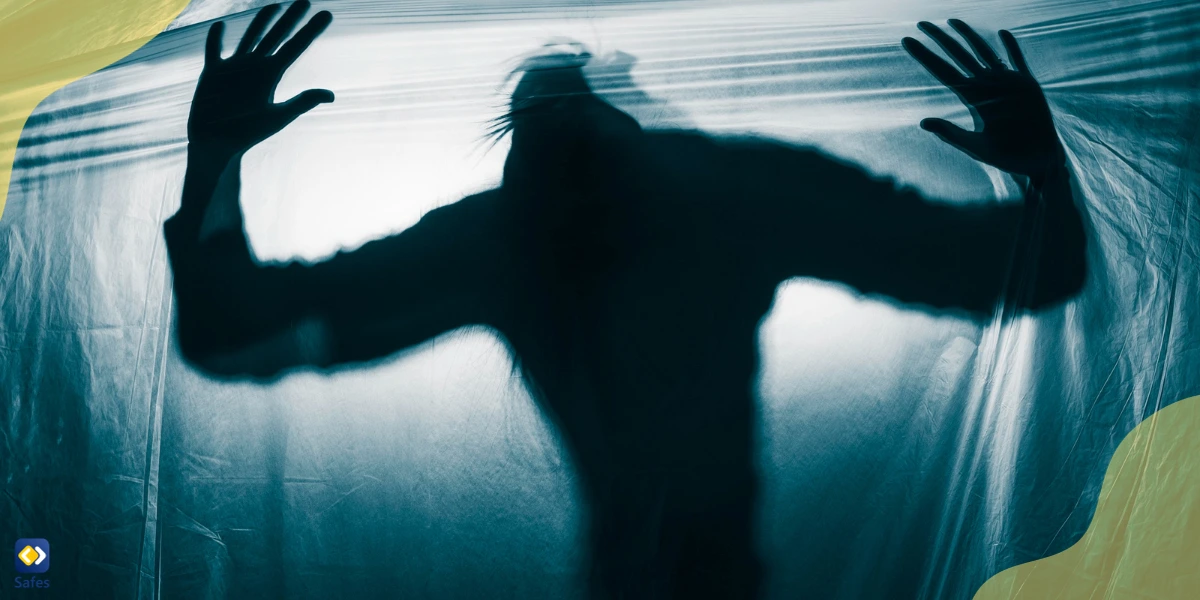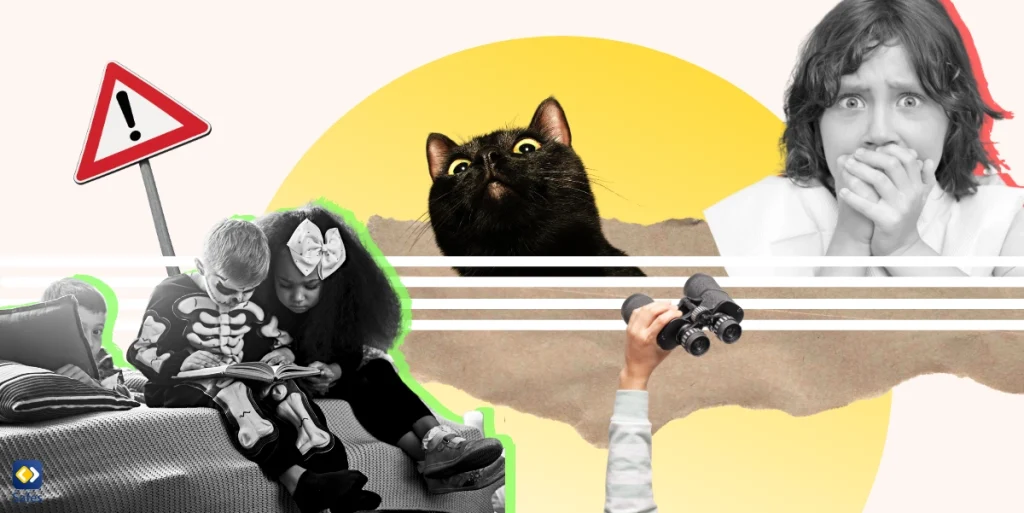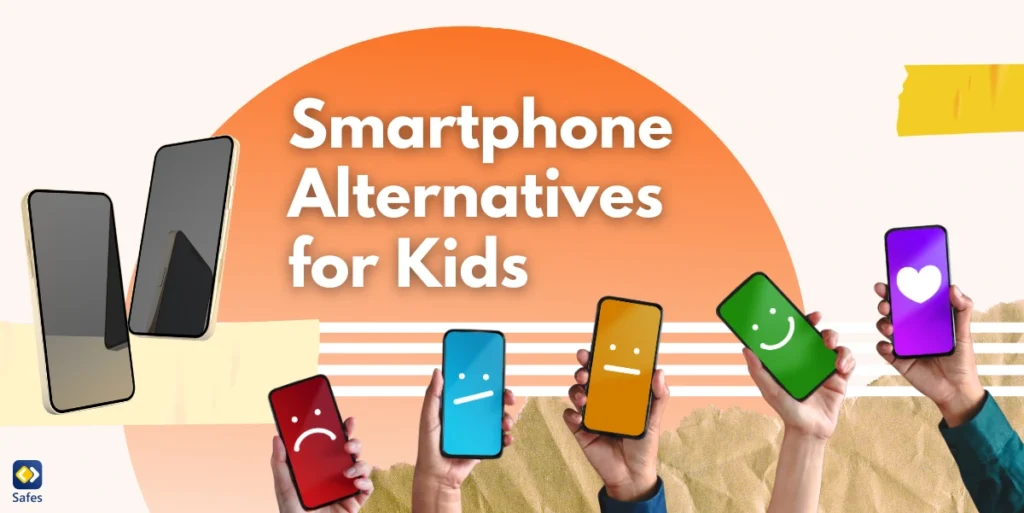Creepypasta is a subgenre of stories that has appeared on the dark web. It is a terrifying mashup of horror imagery and narratives that has captured the attention of viewers all around the world. These stories are frequently shared via social media, forums, and online communities. But is Creepypasta appropriate for young children? In this blog post we’ll look at Creepypasta’s meaning, what it entails, where children can read it and how parents can prevent it.
Download and Start Your Free Trial of the Safes Parental Control App
Why Is It Called Creepypasta?
The word “creepypasta” combines the phrases “copypasta,” which describes items that have been copied and pasted, with “creepy”. They have much in common with dark memes on the internet. Usually written from the first-person point of view, creepypasta stories are meant to be unnerving and have an eerie or ominous vibe.
Although the subjects of creepypasta stories are diverse, their main appeal is their unnerving quality. Usually, they have an aura of mythology, akin to modern-day fairy tales. Horror themes like unusual happenings and paranormal activity are common in creepypasta stories. The content on creepypasta includes audio files, Creepypasta films, and scary pictures of Creepypasta tales. “Slender Man,” “Jeff the Killer,” and “The Russian Sleep Experiment” are a few well-known creepypasta stories. Let’s look at this list of Creepypastas in order to have a better understanding of Creepypasta.
Slender Man
One of the most popular Creepypastas, Slender Man, is a mythical supernatural creature, that initially originated as a creepypasta meme. Slender Man is a tall, skinny monster with a featureless face that typically wears a black suit. According to reports, the entity harasses, kidnaps, and traumatizes children. Narratives about Slender Man usually revolve around enigmatic vanishments, unsettling images, and unsettling experiences. Online forums helped Slender Man become well-known, and he inspired a number of adaptations, such as Creepypasta video games, web shows, and even a 2014 stabbing event in which two young girls allegedly stabbed a classmate in order to appease Slender Man.

Jeff the Killer
Another creepypasta figure with a pallid, featureless face and a Glasgow smile etched into his cheeks is Jeff the Killer. The narrative centers on Jeff, a disturbed young guy who experiences a horrific incident that drives him nuts and turns him into a vicious killer. Jeff is presented as a terrible force and frequently engages in violent and unpleasant things in his tale. An intentionally unpleasant picture of Jeff’s face frequently accompanies the story. In online horror groups, Jeff the Killer has gained popularity and served as an inspiration for fan fiction, artwork, and other media.
The Russian Sleep Experiment
A Creepypasta titled “The Russian Sleep Experiment” tells the tale of a made-up experiment that Soviet scientists conducted in the late 1940s. The story goes that a group of political prisoners were given an experimental medication that prevents sleep, with horrifying outcomes. As the experiment continues, the patients experience tremendous physical and psychological degradation that ultimately drives them nuts and results in horrific acts of self-harm. Based on discovered documents, the plot touches on a variety of topics, such as the horrors of war, unrestrained scientific curiosity, and the resiliency of the human spirit.
Is Creepypasta Safe for Kids?
Generally speaking, Creepypasta tales are not deemed suitable for younger readers. Content on Creepypasta is meant to be eerie and uncomfortable; themes of violence, terror, and psychological suffering are common. The stories might not be appropriate for a younger readership since they could contain severe events, unsettling imagery, and otherworldly aspects. While some Creepypasta stories may be less dramatic, others may be highly graphic and inappropriate for young readers.
In any event, it’s critical to have honest conversations with kids about internet content and to establish age-appropriate boundaries. Additionally, parents should be informed that not all Creepypasta stories are appropriate for all age groups due to the huge and varied nature of the internet.
How to Keep Children Safe From Creepypasta
Children might encounter Creepypasta stories in various online spaces, as these stories are primarily shared and spread through internet platforms. Some common places where children may come across Creepypasta include:
-
Social Media Platforms
Creepypasta stories can be shared on social media platforms such as Reddit, Instagram, Twitter, and Facebook. Users often post or discuss these stories in dedicated groups or communities.
-
Online Forums
Internet forums and message boards, especially those focused on horror, fiction, or storytelling, may feature Creepypasta stories. Websites like Reddit’s “NoSleep” subreddit are popular for sharing and discussing such content.
-
YouTube
Creepypasta stories are sometimes narrated or adapted into videos and uploaded on YouTube channels dedicated to horror content. These videos may include atmospheric music, sound effects, and images to enhance the storytelling experience.
-
Websites
There are specific websites dedicated to hosting and sharing Creepypasta stories. Some of these websites have archives of user-submitted stories, while others curate and showcase selected tales.
-
Online Gaming Communities
Some Creepypasta stories have inspired video games or have been shared within online gaming communities. Children who are part of these communities may come across Creepypasta-related content.
To protect children from dangerous content on all of these platforms, it’s worthwhile to use a parental control app like Safes. Using Safes you can not only block apps and manage children’s screen time, but also filter keywords and URLs while keeping tabs on their digital well-being. Safes is available on iOS and Android. Sign up for a free trial with Safes to explore safe ways to engage with online horror stories and protect your children from inappropriate content.
Conclusion
It’s evident while navigating the murky online spaces that Creepypasta, with its spine-tingling stories and eerie visuals, is not a place for young children. From the depths of internet legend, creatures like Slender Man and Jeff the Killer have a degree of terror that can be too strong for impressionable children. Given their children’s unique maturity and sensitivity, parents and guardians are advised to proceed with caution. In case you want to have quality time with the family watching horror movies, check out our list of 10 horror movies for 10-year-olds. It is critical to have open lines of communication regarding online material and to employ parental control tools to give the younger generation a safer digital experience. In this evolving digital landscape, understanding the nuances of internet folklore is the key to striking a balance between curiosity and caution for children venturing into the virtual unknown.
Your Child’s Online Safety Starts Here
Every parent today needs a solution to manage screen time and keep their child safe online.
Without the right tools, digital risks and excessive screen time can impact children's well-being. Safes helps parents set healthy boundaries, monitor activity, and protect kids from online dangers—all with an easy-to-use app.
Take control of your child’s digital world. Learn more about Safes or download the app to start your free trial today!




